The Alpha Centauri Star System
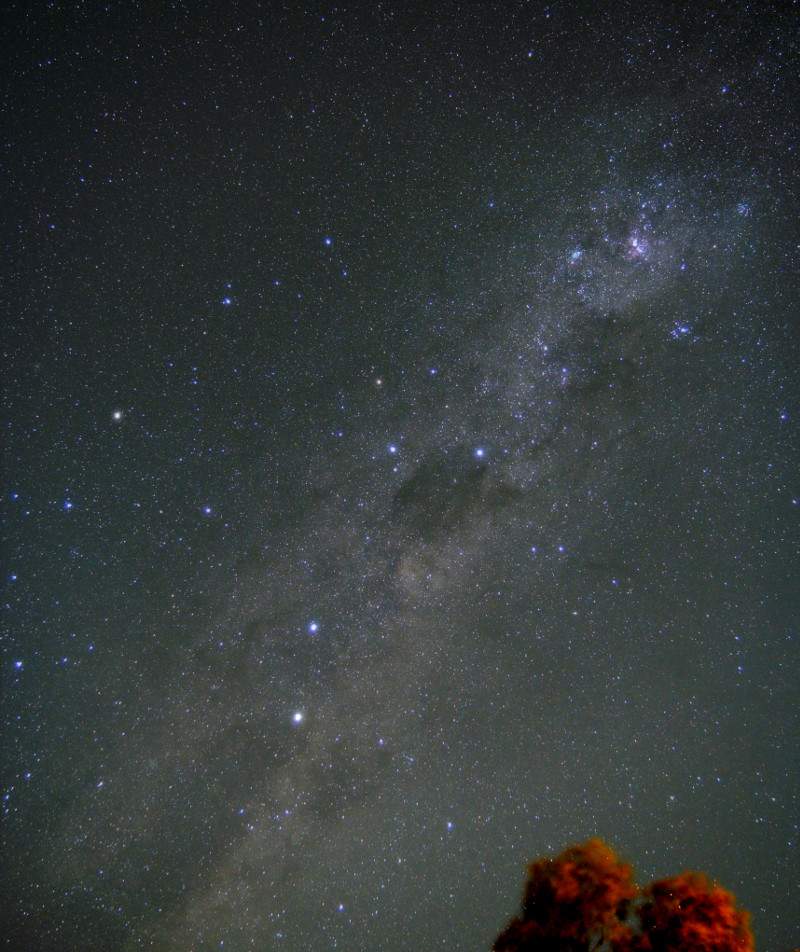
A familiar scene to Southern Hemisphere sky watchers, the Southern Cross and pointer stars sit amongst the Milky Way. This image was made with an Olympus OMD EM5 and 14-42mm standard lens at 18mm f4, 3 minutes exposure
Growing up in Australia, I remember being taught during early schooling about the constellation “The Southern Cross” which is represented on the Australian flag. We were told that the Southern Cross is accompanied by 2 bright pointer stars, used to differentiate it from the “False Cross” a similar looking star pattern also in the southern sky. My guess is that confusing the False Cross and the Southern Cross would have been a bad thing for sailors when they used the stars to navigate at night.
What we hadn’t been taught at school, however, is the brightest Pointer star is in fact the famous star Alpha Centauri. In science fiction, Alpha Centauri is often referenced, including James Cameron’s movie Avator set on a fictitious moon orbiting in the Alpha Centauri star system.
In the image below, which is just a crop of the previous image, I’ve annotated stars and other interesting objects including Alpha Centauri. If you want to see these objects, please note you will need to be south of 25 degrees latitude North, as they will never rise above your local horizon. However, if you are further north please just enjoy these photos!
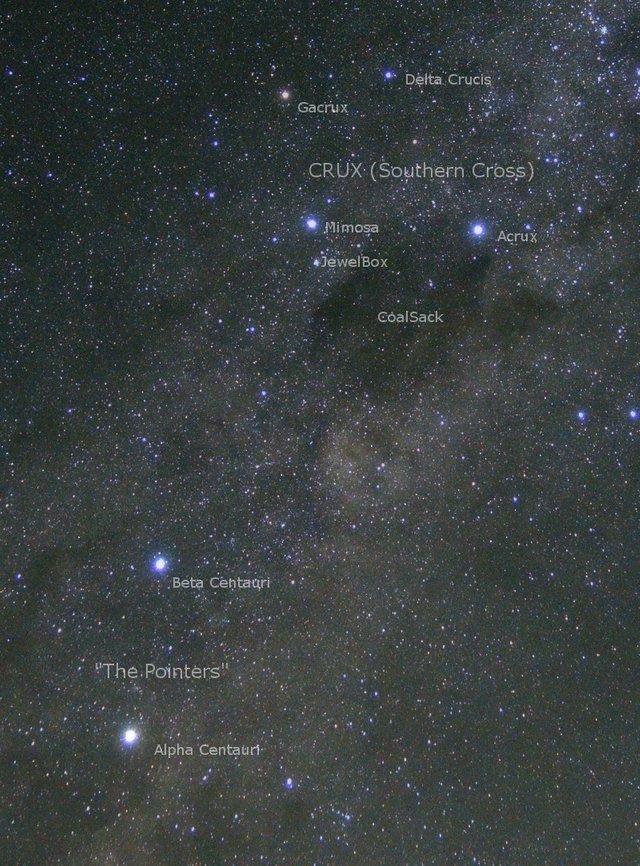
Annotated image showing the Southern Cross and Pointer stars. Alpha Centauri is the bottom pointer star
The Closest Star
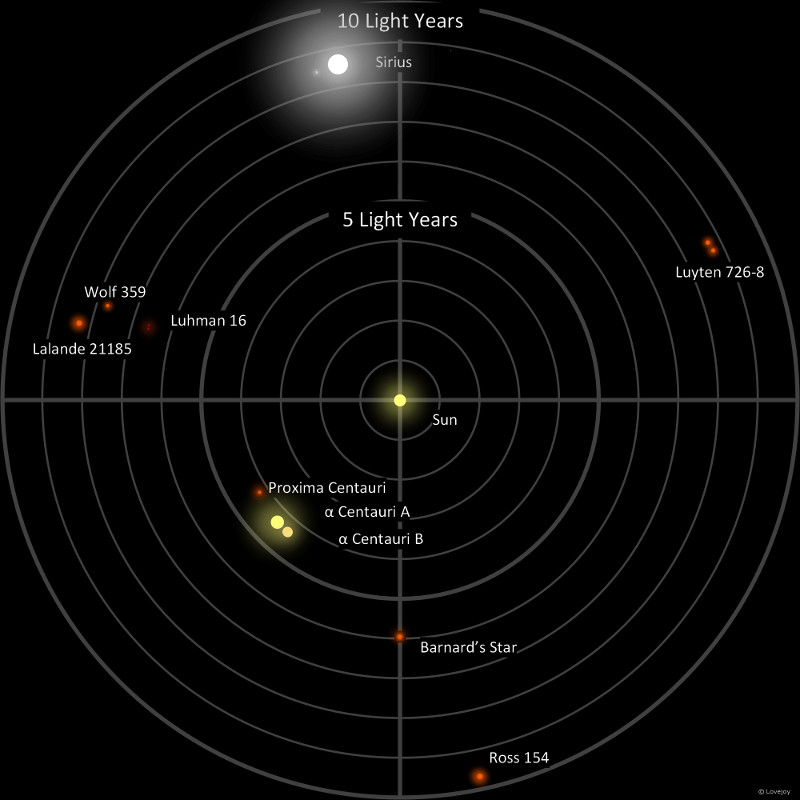
There are 13 stars within 10 Light Years of us, the relative distances, as well as indicative color and relative brightness are shown. The Alpha Centauri system is shown bottom left of sun.
Alpha Centauri is remarkable because it is our nearest star system outside the sun. I refer to it as a "star system" because it consists of 3 stars Alpha Centauri A, Alpha Centauri B and Alpha Centauri (better known as Proxima Centauri) all of which can be seen in a modest sized amateur telescope.
Within 10 light years there are 13 known stars as well as 14th object which has uncertain classification (it seems likely a very large planet). For some perspective, 10 light years is the distance light travels in a period of 10 years, and light travels fast enough to circle the earth 7 times in a second! The above diagram illustrates the relative distances, as well as indicative brightness, relative size and color of these nearest stars. Note the use of the word “indicative”, rather than accurate, because the actual differences are larger than shown, and therefore difficult to render in a diagram.
As large as these distances are perhaps they are within the realms of possibility to send a small robotic probes to these stars within the next 2 or 3 centuries. This is based on the current rapid rate increase of technology development. There is considerable interest in finding life on planets orbiting these stars.
Three Stars
The Alpha Centauri system, as previously mentioned, consists of 3 stars. The 2 brighter components orbit one another every 80 years and vary in distance of 8 to 27 AU, with 1 AU = 1 Astronomical Unit, defined as the mean distance between the earth and sun. The 2 stars are very comparable to the sun as can be seen in this table.
| Star | Mass | Radius | Brightness | Temperature |
|---|---|---|---|---|
| Sun | 1.00 | 1.00 | 1.00 | 5770K |
| Alpha Centauri A | 1.10 | 1.220 | 1.520 | 5790K |
| Alpha Centauri B | 0.91 | 0.86 | 0.500 | 5260K |
| Proxima Centauri | 0.12 | 0.15 | <0.001 | 3040K |
Proxima Centauri orbits at a distance of 13000 AU from the main stars. The following diagram is meant to illustrate that Proxima is a lot dimmer and a lot further out than Alpha Centauri A and B, however, it is not to scale. In fact, you would need to position Proxima 100 meters away to be at true scale with the A and B stars.
The multiplicity of Alpha Centauri precludes many stable orbit configurations for planets, although there is evidence of least one planet around Proxima, and another around Alpha Centauri B.
Seeing Double
To the naked eye, Alpha Centauri A and B appear as one star as they are too close to resolve. However, a modest amateur telescope is sufficient to view them as closely separated pair of stars. They really are quite spectacular, like 2 brilliant jewels together with a copper and gold colors that stand out against the blue of twilight or daylight sky. It is certainly one of my favourite astronomical objects.
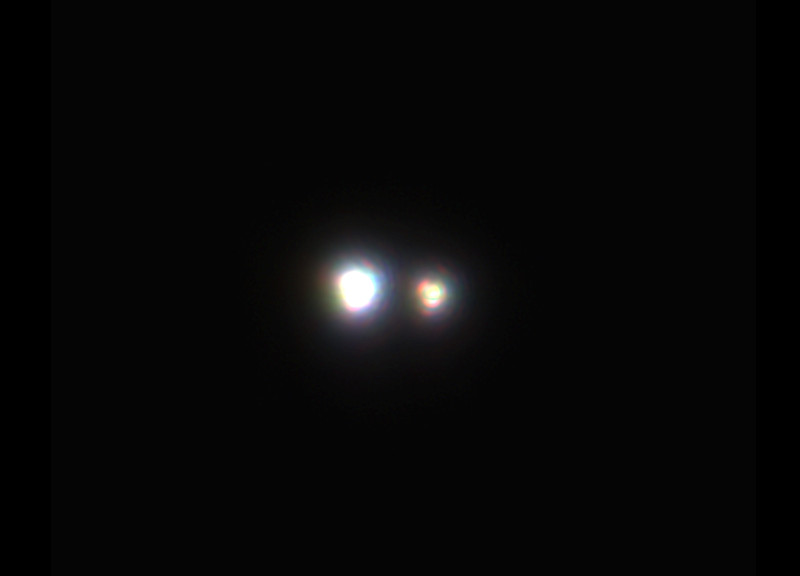
Alpha Centauri at high resolution showing A and B components. A QHY Minicam5f camera and Celestron C14 where used to get this view. The stars are currently close together, but are steadily moving apart, by 2030 they will be twice this distance apart
Finding Proxima
In the image below, I have used a 14” telescope to photograph the 2 components with the color contrast shown as faithfully as possible to what is observed by eye. The cooler gold color of the B component alludes to its cooler temperature.
The red dwarf star Proxima Centauri is the C component of Alpha Centauri. Despite being the closest star beyond the sun it’s difficult to find because of its faintness. This image was made January 19, 2018, with a Celestron C8 telescope, operating at f2.1 and with a QHY183c camera. Processing includes stacking 48 x 30 second exposures
It must have taken nearly an hour to find Proxima Centauri in the above image, made more difficult because the online images I viewed were taken a couple of years ago when the star was further left in the image to where it is now. Here it is pointed out, and the image above should be useful for finding Proxima for a couple of years. When looking at this image, you realize how small and faint a star it is, as even though its much closer than any other star in this picture it still appears inconspicuous.
Proxima Centauri is also known as Alpha Centauri C as it is moderately certain they are gravitationally bound, even though the orbit is very large and the attraction not very strong. As a matter of interest, it also possible to capture Proxima Centauri with an ordinary camera on tracking mount. Here is the result using a 30-year-old 55mm SMC lens.
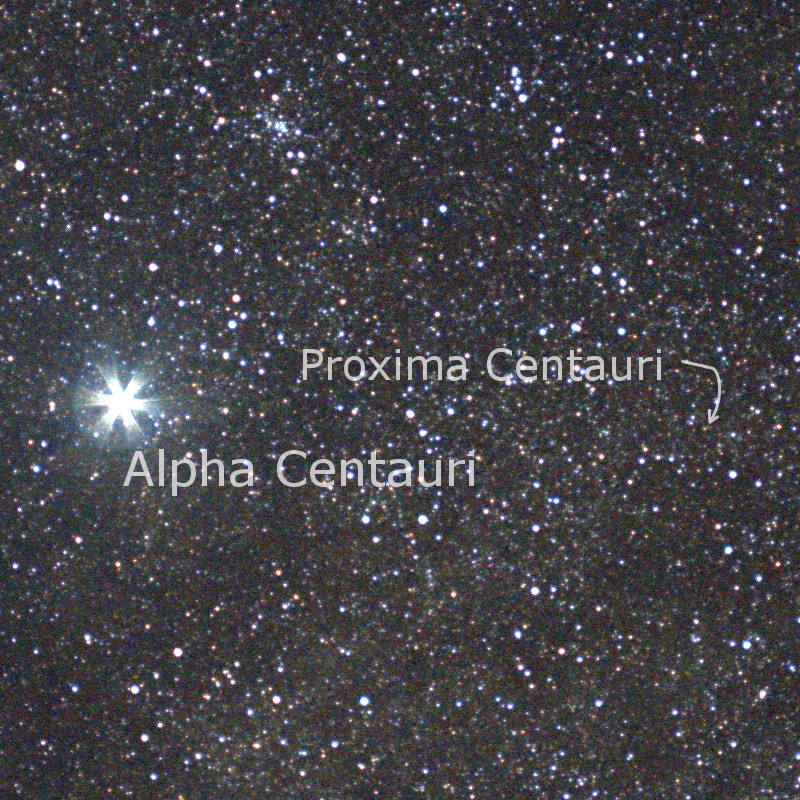
Alpha Centauri and Proxima together. With Olympus OMD EM5 and SMC 55m f3.5 lens, 3 minutes exposure. This is an enlarged crop
Conclusions
Next time you are in the southern hemisphere (or if you already live here go out tonight) have a look for the bright star Alpha Centauri, and ponder what a remarkable object it is.
References
The Real Science of 'Avatar'. https://www.space.com/7698-real-science-avatar.html
Asteroseismology and calibration of alpha Cen binary system. Astronomy & Astrophysics. https://arxiv.org/abs/astro-ph/0206283
World Wide Telesope. Used to identify Proxima Centauri. http://www.worldwidetelescope.org
A terrestrial planet candidate in a temperate orbit around Proxima Centauri. Nature, 536 (7617): 437–440.
Note: All images in this article are my own, and may be used provided credit is given
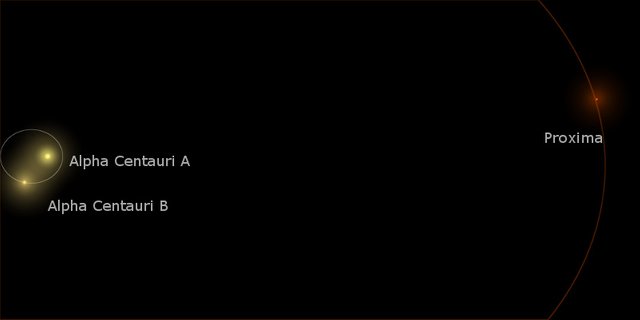
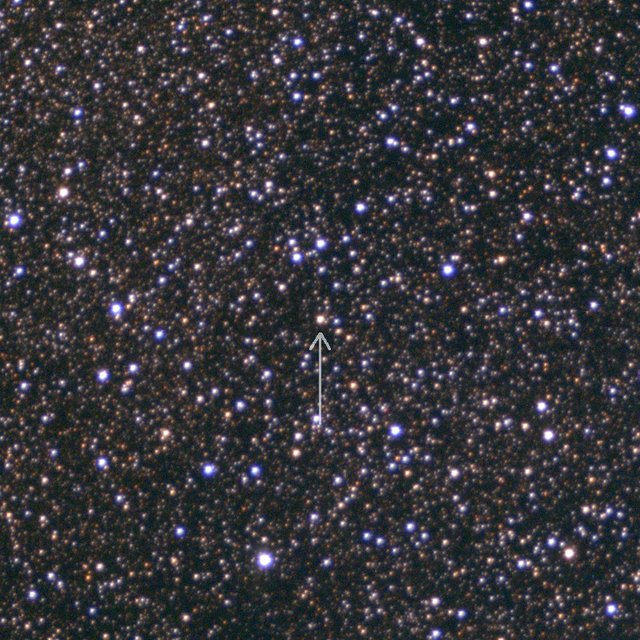
Hi Terry, it's a great pleasure to have you here on Steemit! I am an amateur astrophotographer like you, so I know very well your works... what to say, fantastic.
Let's show us some of your comets and... let's keep in touch, see you soon ;)
Thank you @ilvacca ! I am putting together some more articles to upload in the next week or so. There might be one in their about my comet discoveries. Stay tuned :)
I appreciate the insight on the Alpha Centauri system. It was interesting to learn the relationship to Proxima Centauri as well. Look forward to hearing more astronomy knowledge in the future!
@proteus-h I was able to dig up a photo taken from Arequipa in Peru in March 1900 March and match it with my image from Jan 2018 . You can see both Alpha and Beta Centauri, not only can you see that Alpha has moved, but you may notice other stars moving (at least in the fullsize animation you can). The stars are not as fixed as we think...
Wow ... thanks for pulling this up!
Excellent job, this was a really great article. I liked that you included your own astrophotography images. I've seen the alpha centauri binary pair through a telescope before but have never photographed it as you have.
Proxima is insanely dim in your pictures, I'm surprised you were able to pick it out from the background stars!
Interestingly I have a picture from 13 years ago, and even though its not good quality you can see a hint of the star moving in it when you blink between the images. Not sure if this is going to work, but here is an animated GIF.
Proxima centauri is definitely clearly visible in that animation - so that's 13 years of orbital motion about the other stars? That's incredible if so. Amazing job!
It's actually called proper motion, the stars movement relative to us. Alpha Centauri also shares this motion, it has one of the highest proper motion's in the sky. If you compare images from 100 years ago you can really see the change in position. I believe in a 1000 years time Alpha Centauri will be very close to Beta Centauri in the sky. I'll try to dig some actual images up, it's quite cool.
World of Photography Beta V1.0
>Learn more here<
Thank you for participating in #longexposurephotography, the weekly selection will be released on Monday.
You have earned 5.15 XP for sharing your photo!
Daily photos: 1/2
Daily comments: 0/5
Multiplier: 1.03
Server time: 02:20:04
Total XP: 68.32/100.00
Total Photos: 5
Total comments: 1
Total contest wins: 1
Follow: @photocontests
Join the Discord channel: click!
Play and win SBD: @fairlotto
Learn how to program Steem-Python applications: @steempytutorials
Developed and sponsored by: @juliank
Cool